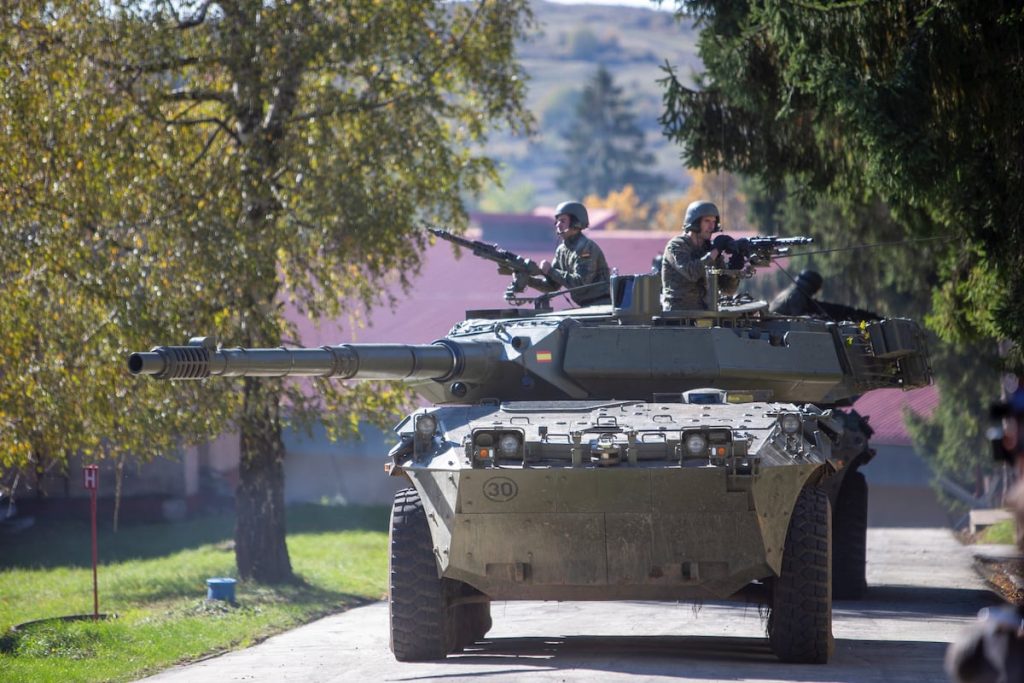The first thing Slovak Prime Minister Robert Fico did upon returning to power a year ago was to announce that his country was suspending military aid to Ukraine, of which his predecessor had been one of the main donors. Fico, who survived an assassination attempt in May which he attributed to his dissenting views on the Russian invasion of Ukraine, declared on the 7th that as long as he is in power, Ukraine will not join NATO and blamed the West for fueling a war where “Slavic people are killing each other.” This was a direct message to the sentiments of his compatriots, reminding them that they share an ethnic identity with Russians and Ukrainians, but not with other Westerners. Slovakia, a country the size of Aragon with the population of Valencia, means “land of the Slavs.”
Despite Fico’s pro-Putin stance, plans approved at the NATO summit in March 2022 in Brussels to deploy four new combat groups in Hungary, Romania, Bulgaria, and Slovakia have not been affected. On July 15, Colonel Francisco Calvo took command of the MN BDE TF SVK (Multinational Brigade Combat Group Slovakia), replacing his Czech counterpart. Spanish military personnel have been part of the NATO combat group in Latvia since 2017, but always in a subordinate role, as Canada holds the command. This is the first time Spain has been a “framework nation,” leading military personnel from the Czech Republic, Slovenia, Slovakia, and Portugal, with Romania joining in January, which represents a challenge and an opportunity for Colonel Calvo.
The Foxtrot Echo operation in Slovakia, with 800 military personnel and over 200 vehicles, is Spain’s largest deployment abroad to date (including the one in Lebanon with 670 troops). The main development after the NATO summit in Madrid in 2022 is that the NATO multinational battalions deployed to deter Russia are designed to escalate quickly and become brigades. In the event of a crisis, the combat group in Slovakia will need to increase from the current 1,100 to 2,800 personnel, with 2,100 being Spanish. Therefore, the overall responsibility lies with General Luis Fernández Herrero, chief of the Paratrooper Brigade, who directs the operation from Paracuellos del Jarama (Madrid).
The battalion will receive NATO certification in November and will be declared fully operational. The real test will come in June when almost the entire brigade conducts an exercise in Slovakia to see if the pieces fit together and if this heterogeneous group of uniforms and flags functions as an interoperable and cohesive force. The Brilat (Airborne Light Infantry Brigade) from Spain, which was in Slovakia from January to July, will take over from the paratroopers and lead the brigade in 2025. The U.S. military personnel, as usual, operate independently and have not placed their mountain company under Spanish or any other foreign command.
The brigade includes tanks from Portugal and Spain, tactical vehicles from Spain, Soviet-origin armored vehicles from the Czech Republic, similar vehicles from Slovenia, Israeli anti-tank missiles, British 105mm Light Guns, Israeli mortars, Spanish anti-drone systems, among other equipment. However, it lacks air defense beyond the range of Mistral missiles and helicopters. Helicopters will be added to the advanced element of the headquarters corps that Spain has deployed at Kuchyňa Air Base. This team of 33 military personnel serves as a liaison and coordination unit with the NATO High Readiness Corps in Valencia. During a crisis, a total of 400 troops from 12 nations would be deployed from Valencia to Kuchyňa to establish a command post capable of directing a corps of 60,000 troops in high-intensity operations in the region.
Spain has not previously undertaken such a significant military commitment, and it has done so at a time when war has become a reality for a neighboring country of Slovakia, which Spain’s military has come to defend. Despite political affinities with figures like Viktor Orbán, Spain’s collaboration with Slovak hosts remains strong. The Slovak military, undergoing rapid modernization with the purchase of U.S. F-16s and Black Hawk helicopters, has been providing excellent support to the Spanish forces. The Spanish brigade has access to the country’s best training facilities, with ample space for maneuvers.


